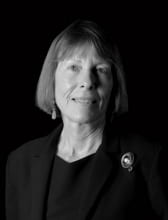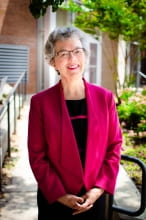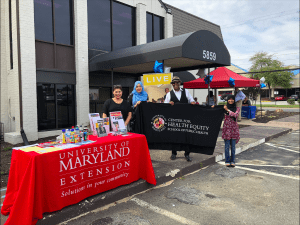This blog post was originally posted on the Horowitz Center for Health Literacy website on May 6, 2019
Written by Dr. Alice Horowitz, Research Associate Professor, Horowitz Center for Health Literacy
 Take both of your hands and place each one on a cheek so your hands encompass both jaws. While keeping them that same distance apart, bring them in front of your face. If you had an infection of that magnitude and size developing on your leg, you’d go screaming to the doctor. But when the same-sized infection manifests in your mouth, it’s suddenly invisible.
Take both of your hands and place each one on a cheek so your hands encompass both jaws. While keeping them that same distance apart, bring them in front of your face. If you had an infection of that magnitude and size developing on your leg, you’d go screaming to the doctor. But when the same-sized infection manifests in your mouth, it’s suddenly invisible.
All too often, your mouth is the forgotten part of your body. Consequently, oral health and oral health literacy are not in the public health space or consciousness. I would argue that among all the topics covered in health literacy, oral health needs a boost in health literacy more than anything else; oral health is part of general health.
I’m currently working on a study focusing on pregnant women’s oral health. There is some evidence that if a pregnant woman has gum disease, it may result in a pre-term low birth weight for her child. There’s stronger evidence that when an infant develops tooth decay, the bacteria that caused it is most likely from mom. If we ensure an expecting mother’s mouth is healthy before she delivers, it’s much less likely she will transfer the decay causing bacteria to her baby.
That’s why we need primary caregivers – physicians, nurses, physician assistants – to help educate expectant women to go to the dentist. They need to understand that it is safe, necessary and paid for by Medicaid. In addition, we need to educate with hands-on demonstrations to increase awareness among expecting mothers about how to clean their infants’ mouths. Whenever I do demonstrations on infants, I attempt to practice clear communication techniques and use the teach-back method to make sure the mothers understand what I’ve instructed them. I ask them to demonstrate on their infants and present back to me. This is a technique that we urge all primary care physicians practice to ensure their patients understand. Making sure that they fully understand helps insure the child remains cavity free.
Many physicians and other health care providers aren’t trained on oral health for many reasons. They don’t receive comprehensive training during their pre-doctoral education nor are they tested on it at
the boards. This lack of education and training separates oral health from general health. We need their help because mothers are more likely to take their infants to primary care providers than to dental providers during the child’s first two years of life.
_____________________________
A health educator, Dr. Horowitz formerly was a senior scientist, National Institute of Dental and Craniofacial Health (NIDCR), National Institutes of Health (NIH). Dr. Horowitz has extensive work in dental caries prevention and early detection. She also has developed numerous surveys on the subject. Dr. Horowitz was instrumental in initiating the need to address health literacy in dentistry and was one of the authors of the first NIH Program Announcement addressing health literacy. She also organized the NIDCR’s workshop on oral health literacy and co-authored the findings. She served as the NIH lead for the Healthy People 2010 Oral Health Chapter and worked on Healthy People and Healthy People 2020. Dr. Horowitz was a primary architect of the Maryland State Oral Cancer Prevention and Early Detection coalition. She initiated both state and national research on what health care providers and the public know and do about oral cancer prevention and early detection. She served on the recent Institute of Medicine’s panel, Advancing Oral Health in America. She has published over 125 scientific papers and book chapters.






